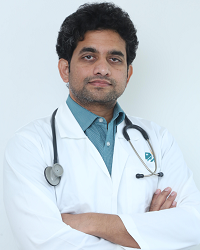Could not find what you are looking for?
- Diseases and Conditions
- Embryonal Tumors - Early Signs, Risk Factors, Diagnosis, and Treatment Explained
Embryonal Tumors - Early Signs, Risk Factors, Diagnosis, and Treatment Explained
Embryonal tumors are a group of fast-growing cancers that arise from very early (embryonic) cells that remain in a child's body after birth. Because these tumors come from cells that were meant to develop into mature tissues, they often appear in infants, young children, and occasionally adolescents. While the term "embryonal" can sound alarming, many of these tumors are highly treatable today with coordinated care, modern chemotherapy, precision surgery, and child-friendly radiation techniques. This article explains what embryonal tumors are, the main subtypes, symptoms, diagnosis, staging, treatment options, prognosis, and prevention tips.
Note: This article is for general education and doesn't replace medical advice. A personalized plan should always be made with a pediatric oncology team.
Overview: What Are Embryonal Tumors and Why Early Detection Matters
Embryonal tumors are cancers that start in cells left over from early development. Instead of maturing into normal tissues, these cells can begin to grow abnormally and form tumors. They can occur in the brain and spinal cord, kidneys, liver, muscles, eyes, or other organs. Most cases are diagnosed in babies and young children.
Why early detection matters:
- These tumors tend to grow quickly. Early diagnosis allows safer surgery, more precise radiation (if needed), and better responses to chemotherapy.
- Starting treatment promptly helps prevent complications—such as raised brain pressure in brain tumors, kidney failure in Wilms tumor, or spreading (metastasis) in high-risk tumors.
- Today's therapies, supportive care, and rehabilitation help many children recover well and return to normal activities.
Types of Embryonal Tumors
Doctors organize embryonal tumors by where they start and the cell type involved. Common pediatric embryonal tumor groups include:
Central nervous system (CNS) embryonal tumors
- Medulloblastoma: The most common malignant brain tumor in children, typically starting in the cerebellum (back of the brain). Now classified into molecular subgroups (WNT, SHH, Group 3, Group 4), which influence prognosis and treatment, medulloblastoma is often very responsive to combined therapy.
- Atypical teratoid/rhabdoid tumor (ATRT): ATRT, associated with SMARCB1/INI1 or SMARCA4 mutations, is a rare, aggressive brain tumor often seen in very young children; treatment is specialized.
- Embryonal tumors with multilayered rosettes (ETMR): Rare, fast-growing brain tumors in infants and toddlers; prognosis remains poor despite aggressive treatment; require expert, intensive care.
Kidney embryonal tumors
- Wilms tumor (nephroblastoma): The most common childhood kidney cancer; frequently curable with surgery and chemotherapy. Radiation is used in higher-stage or unfavorable histology cases, not routinely.
Liver embryonal tumors
- Hepatoblastoma: A liver tumor of early childhood that often responds well to chemotherapy plus surgery; liver transplant is considered in selected cases. AFP (alpha-fetoprotein), a protein, is elevated in around 90% of cases, but not always.
Muscle and soft tissue embryonal tumors
- Embryonal rhabdomyosarcoma: Embryonal Rhabdomyosarcoma, a soft-tissue cancer resembling developing muscle, is the most common subtype, but other forms exist (alveolar, pleomorphic). Embryonal Rhabdomyosarcoma often arises in the head/neck, genitourinary tract, or limbs; very treatable with modern combined therapy.
Eye embryonal tumors
- Retinoblastoma: A retinal tumor in infants and young children; very high cure rates when detected early, with many eye-sparing options. Genetic RB1 testing is important for bilateral cases.
Adrenal and related tumors
- Neuroblastoma: A tumor of the sympathetic nervous system (often adrenal gland); behavior varies from very curable to high-risk forms needing intensive multimodal therapy. Risk stratification includes age lesser than 18 months vs greater than or equal to 18 months, MYCN amplification, DNA ploidy, and segmental chromosomal aberrations.
Not every tumor in these locations is embryonal, but many of the most common childhood tumors fit this category. Subtype and biology guide the treatment plan.
Causes: Known or Suspected
Most embryonal tumors happen because of DNA changes that occur before or shortly after birth. In many children, there is no identifiable "cause." Contributing factors may include:
- Random genetic changes during early development.
- Rare inherited syndromes (e.g., changes in specific tumor-suppressor genes).
- Some studies suggest associations with premature birth or low birth weight; however, causality has not been established.
- Prior radiation exposure in children is very uncommon and usually not a cause, though in rare cases it can lead to secondary cancers.
Parents and children do not cause embryonal tumors through lifestyle or behavior. These cancers are not contagious.
Risk Factors: Lifestyle, Genetic, Environmental, and Medical
Having a risk factor does not mean a tumor will occur; it only raises the likelihood.
Genetic conditions and family history
Examples: RB1 gene changes (retinoblastoma), WT1 or other genes (Wilms tumor), SMARCB1/SMARCA4 (ATRT/rhabdoid tumors), and certain cancer predisposition syndromes.
Very young age
Many embryonal tumors occur in infants and preschool-aged children.
Prematurity/low birth weight
Observed association with some tumor types (not a cause by itself).
Environmental exposures
Clear links are uncommon in pediatrics; research continues.
Genetic counseling can help families understand risks and guide screening when relevant.
What Are the Symptoms of Embryonal Tumors?
Symptoms depend on the tumor's location and size. Because children may struggle to describe symptoms, caregivers should watch for persistent or unusual signs.
Common early signs by location:
Brain and spinal cord
- Morning headaches, vomiting without diarrhea, balance troubles, clumsiness, vision changes, abnormal eye movements, irritability, drowsiness, seizures, or developmental regression.
Kidney (Wilms tumor)
- Painless abdominal swelling or a firm mass, abdominal pain, blood in urine, fever, or high blood pressure.
Liver (hepatoblastoma)
- Abdominal swelling or a mass, decreased appetite, weight loss, or jaundice (rare).
Soft tissue/muscle (rhabdomyosarcoma)
- Lump that grows, bleeding from nose/throat/genitourinary tract (site-dependent), persistent ear/nasal symptoms, or difficulty urinating.
Eye (retinoblastoma)
- White reflex in the pupil (leukocoria) noticed in photos, crossed eyes (strabismus), redness, swelling, or vision problems.
Adrenal/nerve (neuroblastoma)
- Abdominal mass, bone pain/limping, bruising around the eyes, constipation/diarrhea, blood pressure or heart-rate changes, or neurologic symptoms.
Any rapidly growing lump, persistent unexplained symptoms, or neurological changes deserve prompt pediatric evaluation.
How Are Embryonal Tumors Diagnosed?
Diagnosis combines careful examination, imaging, laboratory tests, and tissue sampling when safe and necessary.
- Clinical evaluation
- Detailed history and physical exam; growth and developmental assessment.
- Imaging
- Ultrasound: Often first test for abdominal masses; no radiation.
- MRI: Preferred for brain/spine and soft tissues for detailed anatomy; avoids radiation.
- CT scan: Sometimes used for chest/abdomen to assess spread or surgical planning.
- PET-CT/MIBG scan (for neuroblastoma): MIBG is more specific than PET-CT; FDG-PET is used if MIBG-negative.
- Laboratory tests
- Blood counts, chemistry, and tumor markers where relevant:
- Alpha-fetoprotein (AFP) often elevated in hepatoblastoma.
- Urine catecholamine metabolites (VMA/HVA) often elevated in neuroblastoma.
- Genetic/molecular testing on blood or tumor tissue helps classify risk.
- Blood counts, chemistry, and tumor markers where relevant:
- Biopsy or surgical removal
- Biopsy confirms diagnosis in most tumors, but in retinoblastoma it is avoided due to risk of tumor spread; diagnosis is made by imaging and ophthalmic examination.
- For bilateral Wilms tumor, nephron-sparing surgery is preferred when possible. For some kidney tumors in children, upfront surgery may be considered; in others, preoperative chemotherapy is used before resection (regional practice differences).
- Eye and CNS assessments
- Detailed eye exam under anesthesia for retinoblastoma.
- Lumbar puncture and MRI for certain brain tumors to assess cerebrospinal fluid spread when appropriate.
Results are reviewed by a multidisciplinary tumor board to plan the safest and most effective treatment.
Staging and Grading: What They Mean
Staging describes how far the tumor has spread; grading describes how aggressive the cells look under a microscope. Systems vary by tumor type:
CNS embryonal tumors (e.g., medulloblastoma, ATRT, ETMR)
- Risk groups consider age, extent of disease (local vs metastasis), residual tumor after surgery, and molecular subtype.
Wilms tumor
- Staged I–V based on kidney/lymph node involvement and spread (Stage V = bilateral); histology (favorable vs anaplastic) affects risk.
Hepatoblastoma
- PRETEXT system (pre-treatment extent) maps liver involvement; AFP and spread inform risk.
Rhabdomyosarcoma
- Staging, grouping (surgical extent), and risk categories based on site, size, nodes, metastatic spread, and histology.
Neuroblastoma
- INRG staging is image-based (L1, L2, M, MS). INSS is surgical/pathology based.
Retinoblastoma
- International Intraocular Retinoblastoma Classification (IIRC) or AJCC staging, and risk features on pathology.
Why it matters:
- Stage/risk group determines treatment intensity and the need for surgery, chemotherapy, radiation, and targeted/immunotherapy.
- It helps estimate outcomes and plan follow-up.
Treatment Options for Embryonal Tumors
Treatment is individualized by tumor type, stage, molecular features, child's age, and overall health. A pediatric oncology team coordinates care with neurosurgeons, pediatric surgeons, orthopedic and ENT surgeons, radiation oncologists, ophthalmologists, pathologists, radiologists, rehabilitation experts, psychologists, dietitians, and child-life specialists.
Surgery
Goals: remove as much tumor as safely possible, confirm diagnosis, relieve pressure, and enable long-term control.
Examples:
- Brain/CNS tumors: neurosurgical resection when feasible.
- Wilms tumor: partial or total nephrectomy, plus lymph node sampling.
- Hepatoblastoma: partial hepatectomy; liver transplant considered in unresectable cases after chemotherapy.
- Rhabdomyosarcoma: conservative surgery to preserve function and appearance whenever possible.
- Retinoblastoma: chemotherapy is usually first-line in many centers; eye-sparing focal therapies are preferred; enucleation (eye removal) is reserved for advanced cases to protect life.
Reconstructive planning and rehabilitation preserve function, growth, and cosmetic outcomes.
Medical Treatment
Chemotherapy (backbone for many embryonal tumors)
- Used before surgery to shrink tumors, after surgery to kill residual cells, or both.
- Protocols are standardized by tumor type and risk group to optimize cure and minimize toxicity.
Targeted therapy
- Based on tumor-specific biology (e.g., ALK inhibitors for ALK-altered neuroblastoma; others vary by trial and availability).
- Less toxic to normal cells when a clear molecular target exists.
Immunotherapy
- Neuroblastoma: anti-GD2 antibody-based therapy for high-risk disease in maintenance or consolidation.
- Other immunotherapies may be used in select settings or clinical trials.
Intravitreal/intra-arterial therapy (retinoblastoma)
- Tiny injections into the eye or targeted chemotherapy into the ophthalmic artery can save the eye and vision in many cases.
High-dose therapy with stem cell rescue (select high-risk cases)
- Used mainly in high-risk neuroblastoma, occasionally in brain tumors in clinical trials.
Supportive care
- Infection prevention/treatment, transfusions, growth factors, anti-nausea medications, nutrition, pain management, and psychosocial support.
- Fertility preservation discussion for older children/teens when feasible.
Radiation Therapy
Precision radiation is used when needed to control local disease or treat spread:
- CNS tumors: craniospinal irradiation (CSI) or focal radiation in children >3–5 years; for younger children, radiation is reduced or deferred to limit neurotoxicity.
- Rhabdomyosarcoma: site-specific radiation for local control when surgery cannot remove all disease or to avoid disfiguring surgery.
- Wilms/hepatoblastoma: used selectively for node-positive or residual disease.
- Retinoblastoma: plaque brachytherapy or highly focal external radiation in select cases.
Pediatric planning focuses on protecting growth plates, endocrine organs, hearing, vision, cognition, heart/lungs, and fertility.
Proton Therapy
Proton therapy delivers radiation with minimal exit dose, sparing healthy tissues more than many photon techniques. Clinical availability is limited; comparative trials with advanced photon therapy (IMRT/VMAT) are ongoing.
May be valuable for:
- Brain/spine tumors to reduce dose to the cochlea, hypothalamus/pituitary, hippocampi, and developing brain.
- Head/neck rhabdomyosarcoma to protect facial bones, salivary glands, and vision structures.
- Thoracic/abdominal sites near heart, lungs, liver, or kidneys in selected cases.
Suitability depends on tumor type, location, age, and availability; doctors compare benefits versus advanced photon therapy.
Prognosis: Survival, Development, and What Influences Outcomes
Outcomes for many embryonal tumors have improved significantly:
- High cure rates for Wilms tumor and many retinoblastoma cases.
- Medulloblastoma cure rates are strong with modern risk-adapted therapy.
- Hepatoblastoma outcomes are excellent when resection or transplant is achieved after chemotherapy.
- Rhabdomyosarcoma outcomes vary by site and risk but are often very good with combined therapy.
- Low-risk neuroblastoma can even regress spontaneously in infants.
- ATRT and ETMR prognosis remains poor, <30% long-term survival in many series.
Key influencers:
- Age, tumor type, stage, and molecular features.
- Completeness of safe surgery.
- Response to initial therapy and post-treatment minimal disease status.
- Access to specialized pediatric oncology care and rehabilitation.
- Adherence to therapy and follow-up.
Survivorship programs monitor and manage late effects—endocrine, neurocognitive, and hearing loss complications are common late effects—so children can thrive after treatment.
Screening and Prevention: What Helps?
No lifestyle or diet changes are known to prevent these cancers. Screening is limited to high-risk families (e.g., retinoblastoma, Li-Fraumeni, Beckwith-Wiedemann). Practical steps include:
- Trust instincts: persistent morning vomiting/headaches, new balance or vision problems, rapidly growing lumps, abdominal swelling, unusual bleeding, or behavior changes warrant evaluation.
- Genetic counseling/testing: recommended for families with known hereditary syndromes or bilateral/multifocal disease (e.g., retinoblastoma, certain Wilms tumor syndromes).
- Regular pediatric checkups: growth and development reviews may uncover early signs.
- Healthy habits: while they cannot prevent these tumors, good nutrition, sleep, hygiene, and vaccinations support treatment and recovery.
For International Patients: Seamless Access and Support at Apollo
Apollo Hospitals provides end-to-end coordination for families traveling for pediatric oncology care:
- Pre-arrival medical review
- Secure sharing of scans, pathology, and lab reports for a preliminary opinion and tentative plan.
- Appointment and treatment coordination
- Priority scheduling with pediatric oncology, neurosurgery/pediatric surgery, radiation oncology (including proton therapy evaluation where appropriate), ophthalmology, pathology/genetics, and rehabilitation.
- Travel and logistics
- Assistance with medical visa invitations, airport pickup on request, nearby accommodation, and local transport support.
- Language and cultural support
- Interpreter services, child-life specialists, and written care plans to support comfort and understanding.
- Financial counseling
- Transparent estimates, package options where feasible, insurance coordination, and support with international payments.
- Continuity of care
- Detailed discharge summaries, survivorship plans, vaccination guidance, and teleconsultations with coordination for home-country follow-up.
Recovery, Side Effects, and Follow-Up: What to Expect
- During treatment
- Expect periods of low blood counts and infection risk; fever protocols and hygiene are essential.
- Common side effects: nausea, hair loss, mouth sores, fatigue, appetite changes. Supportive care has greatly improved comfort and safety.
- Schooling continues through home/hospital education and later transitions back to classroom with accommodations as needed.
- After surgery and radiation
- Rehabilitation (physio, speech/occupational therapy) begins early to restore strength, balance, swallowing, speech, and school readiness.
- For brain tumors, neurocognitive rehabilitation and classroom supports help learning and attention.
- Long-term survivorship
- Scheduled visits monitor growth, hormones, hearing/vision, heart/kidney function, bone health, and learning.
- Psychosocial support for children and caregivers addresses resilience, anxiety, and return to daily life.
- Exercise, good nutrition, and sleep support recovery and well-being.
- Follow-up schedule
- Frequent visits and scans early on, then gradually spaced. Imaging and laboratory tests are tailored by tumor type and risk of relapse.
Frequently Asked Questions (FAQs)
Are embryonal tumors curable?
Many are curable, especially Wilms tumor, retinoblastoma, and many medulloblastomas and rhabdomyosarcomas. Outcomes depend on tumor type, stage, molecular features, and early response to therapy.
What is the survival rate for embryonal tumors?
Survival varies widely: some types (e.g., favorable-risk Wilms tumor) have very high cure rates, while others (e.g., ATRT, ETMR, high-risk neuroblastoma) are more challenging. A pediatric oncology team provides a personalized outlook after staging and molecular testing.
What are common treatment side effects?
Chemotherapy can cause low blood counts, infection risk, nausea, hair loss, and fatigue. Radiation may affect growth, cognition, hearing/vision, or fertility depending on fields and age. Modern planning and supportive care aim to reduce and manage side effects.
Will my child need surgery?
Many embryonal tumors require surgery—either upfront or after shrinking with chemotherapy—for diagnosis, relief of pressure, or definitive removal. Surgeons prioritize safety, function, and appearance, often using reconstructive techniques.
How long is recovery time?
It depends on tumor type and treatment plan. Some regimens last several months; others, like certain brain tumor or rhabdomyosarcoma protocols, can extend 9–12 months or more. Many children resume school and activities during or soon after therapy, with supports.
Can these tumors come back (recurrence)?
Yes, relapse can occur. Options include different chemotherapy, targeted or immune therapies, high-dose therapy with stem cell rescue, proton or focal radiation, and clinical trials. Close follow-up helps detect relapse early.
Why Choose Apollo Hospitals for Embryonal Tumor Care
- Specialized pediatric oncology: Experienced teams across neuro-oncology, surgical oncology, ophthalmic oncology, and pediatric surgery.
- Precision diagnostics: High-resolution MRI, pediatric anesthesia support, expert pathology, tumor markers, and advanced molecular profiling.
- Full-spectrum therapy: Standard-of-care chemotherapy, targeted and immune therapies where appropriate, complex pediatric surgeries, precision radiation, and proton therapy evaluation when suitable.
- Child-centered supportive care: Pediatric ICUs, infection prevention, nutrition, rehabilitation, child-life services, psychosocial and school reintegration support.
- International patient coordination: Pre-arrival review, transparent estimates, logistics support, interpreters, and telemedicine-enabled follow-up.
Next Steps
- If a child has persistent morning headaches/vomiting, balance problems, a rapidly growing lump, abdominal swelling, a white eye reflex in photos, unusual bleeding, or unexplained behavior changes, arrange a pediatric evaluation promptly.
- Bring prior scans, lab results, surgery notes, medication lists, and growth records to the visit.
- Ask about the tumor type, staging, surgical plan, chemotherapy and radiation options (including proton therapy where relevant), rehabilitation, school supports, and a personalized cost estimate at Apollo Hospitals.
- International families can request pre-arrival medical review, assistance with visas and travel, and coordinated appointments to minimize delays.
With early, expert, and compassionate care, many children with embryonal tumors achieve excellent outcomes. A skilled, child-focused team—combining advanced treatments with thoughtful rehabilitation and family support—makes all the difference.












